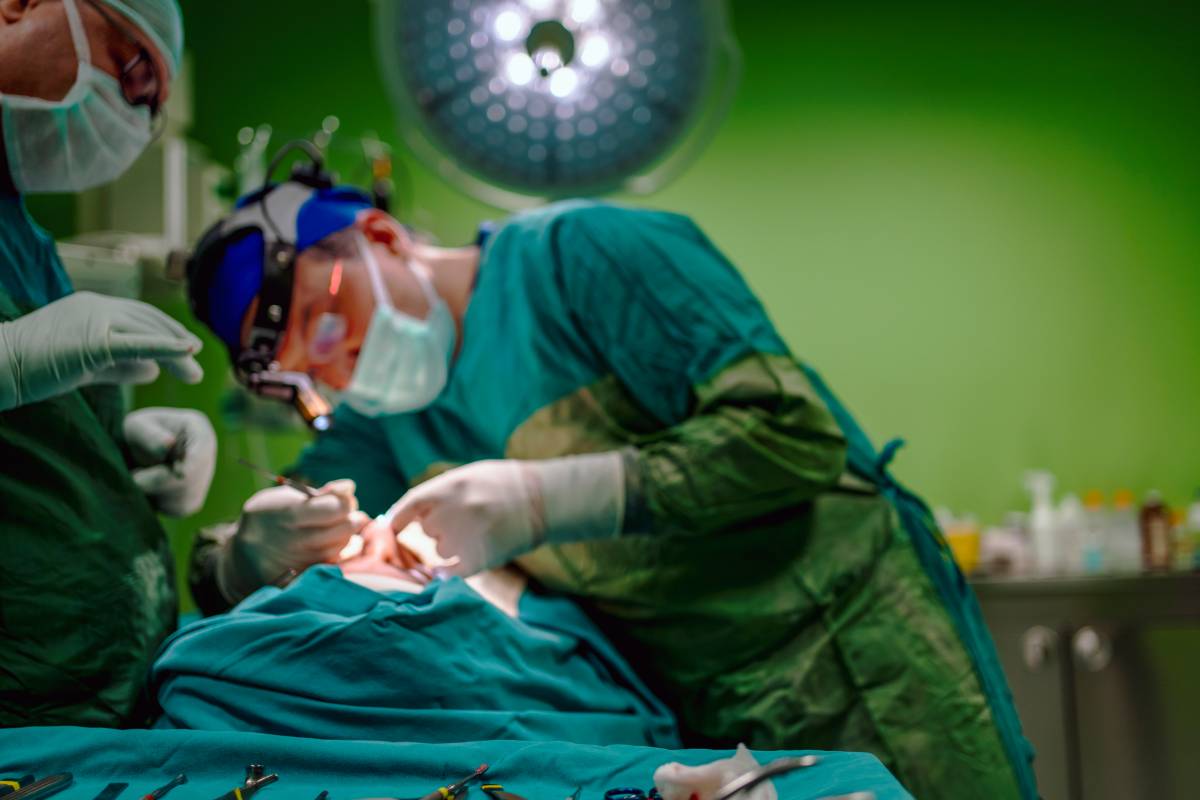Sinus Surgery in the Ambulatory Setting
August 18, 2022
Chronic sinus problems or rhinosinusitis is one of the most prevalent diseases in the world, and the incidence among people of all ages continues to rise [1]. Chronic rhinosinusitis is defined by long-standing inflammation of the nose and sinuses for at least 12 weeks and can occur in the presence or absence of nasal polyps. Most commonly it leads to nasal obstruction, nasal drip, loss of smell, and even facial pain or pressure [7]. Sinus surgery is an effective treatment option if pharmacological methods are not sufficient and can be safely performed in the ambulatory setting, reducing the time and financial burden on patients.
Chronic rhinosinusitis is often resolved with medical therapy such as topical corticosteroids [2]. However, if symptoms are not adequately controlled with steroids, endoscopic sinus surgery is often the next step in treatment for those with nasal polyps. Surgery in this case serves to remove the polyps and relieve the obstruction. It, importantly, can also enlarge the sinus ostia by drilling into surrounding bone, which helps to drain the sinuses and improve the efficacy of topical steroids. Endoscopic sinus surgery can be done in an outpatient setting, such as an ambulatory surgery center or a office-based surgical suite, as it is performed solely through the nostrils and has a relatively fast recovery process; thus patients can typically go home the same day. Of note, surgery for chronic rhinosinusitis is not standardized. The technique as well as the invasiveness of the surgery varies from surgeon to surgeon [2]. Despite additions of corticosteroids post-operatively, polyp recurrence is quite common. One study found that 40% of patients had polyp recurrences within 18 months of their initial surgery, and within 5 years 20% had undergone a follow-up surgery [3]. A recent observational study found that more extensive sinus surgery was associated with lower rates of revision surgery.
Unfortunately, the evidence supporting surgical intervention is limited largely to observational studies due to ethical issues for surgical randomized controlled trials. In the UK, surgery for chronic rhinosinusitis is classified as a “procedure of limited clinical effectiveness” [4]. One recent randomized control trial from 2022 demonstrated endoscopic sinus surgery plus medical therapy to be more efficacious than medical therapy alone. Yet, the clinical benefits for patients were not perceived to be significant in terms of health-related quality of life and decreased corticosteroid use [6]. Long-term data is necessary for establishing the true efficacy of surgery in this population of patients to develop more concrete evidence-based guidelines. Chronic sinusitis can also be treated with the balloon sinuplasty procedure, which does not require any incisions but is not applicable to all patients.
New potential therapies include ‘biologics’, such as dupilumab, which target inflammation alongside corticosteroids and has shown some effectiveness in managing severe chronic rhinosinusitis [2, 8]. These biologics target specific mediators in the pathway of inflammation and have been shown to be associated with improved quality of life, reduced nasal polyp size, and even a decreased need for surgery. However, these biological treatments are expensive and, compared to surgery, not as cost efficient. They can also have a wide range of adverse events including severe infections, tuberculosis reactivation, lymphoma, and pharyngitis [8]. While more research is needed to support the clinical use of biologics as a first-line treatment for chronic rhinosinusitis, economic research is also greatly needed to compare the long-term cost-effectiveness of biologics to ambulatory sinus surgery.
References
- Krouse, John H. “Management of the Patient with Rhinosinusitis.” Managing the Allergic Patient, 2008, pp. 103–129, Chapter 4, 10.1016/b978-141603677-7.50008-x.
- Hopkins, Claire. “Surgery and Uncontrolled Chronic Rhinosinusitis.” The Lancet Respiratory Medicine, vol. 10, no. 4, Apr. 2022, pp. 315–317, 10.1016/s2213-2600(21)00490-2.
- DeConde, Adam S., et al. “Prevalence of Polyp Recurrence after Endoscopic Sinus Surgery for Chronic Rhinosinusitis with Nasal Polyposis.” The Laryngoscope, vol. 127, no. 3, 12 Nov. 2016, pp. 550–555, 10.1002/lary.26391.
- Procedures of limited clinical effectiveness (PoLCE). London: NHS North Central London. https://www.mysurgerywebsite.co.uk/website/E83037/files/PoLCE_Leaflet_v1.pdf.
- Hopkins, Claire, and Valerie Lund. “Does Time from Previous Surgery Predict Subsequent Treatment Failure in Chronic Rhinosinusitis with Nasal Polyps?” Rhinology Journal, vol. 0, no. 0, 1 Apr. 2021, 10.4193/rhin21.017.
- Lourijsen, Evelijn S, et al. “Endoscopic Sinus Surgery with Medical Therapy versus Medical Therapy for Chronic Rhinosinusitis with Nasal Polyps: A Multicentre, Randomised, Controlled Trial.” The Lancet Respiratory Medicine, vol. 10, no. 4, Apr. 2022, pp. 337–346, 10.1016/s2213-2600(21)00457-4.
- van der Lans, Rik J. L., et al. “Therapeutic Options for Chronic Rhinosinusitis in N-ERD Patients.” Frontiers in Allergy, vol. 2, 24 Aug. 2021, 10.3389/falgy.2021.734000.
- Chong, Lee‐Yee, et al. “Biologics for Chronic Rhinosinusitis.” The Cochrane Database of Systematic Reviews, vol. 2020, no. 2, 27 Feb. 2020, www.ncbi.nlm.nih.gov/pmc/articles/PMC7043934/, 10.1002/14651858.CD013513.pub2.